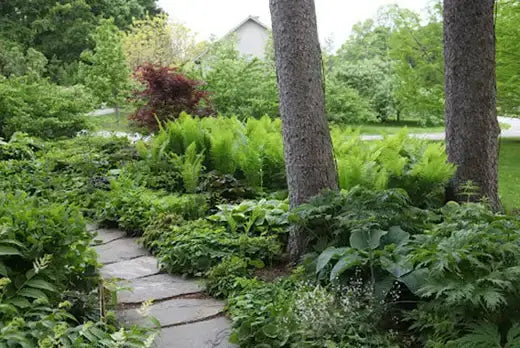Native ferns can make easy borders
As springtime rolls around again, you may be starting to get excited about planning this year’s garden. Perhaps you are thinking of trying something a little bit different than the previous years, but you’re not sure which route you want to take. Sometimes the best ideas are the ones that are right in front of us; using plants native to where you live.
Ferns make excellent border plants, and most of them do well in a broad range of soils. Although some people may think ferns take a lot of care, if you choose a native to where you live, you may not have to put much work into them. Whether you live in a dry or moist climate, a fern is suitable for your location.
Dry climates with lots of sunlight
If you live in an area in the Southern United States, you will want to look for a fern that will withstand the relentless sun and dry conditions. Investing in Christmas Fern or Hay Scented Fern is recommended for those living in these types of climates. Both can tolerate many different types of soil and are easy to grow. However, Hay Scented Ferns will need to be watered more regularly if exposed to more sunlight. It ensures that they are placed in areas where they will get a break from sunlight for at least part of the day.
.
Moist climates with lots of shade
For people living in the Eastern United States or the Mid-West region, investing in moisture-loving ferns and need of full shade are going to be the best options for your fern border. Japanese Painted Ferns and New York ferns are two excellent options for these types of climates. They both have beautiful colors that stand out in the shade, and both thrive in high moisture and fully shaded areas. One thing to note is that they will need to be protected from winds, so using them as a border for a fenced area or along your house will be the best option for planting.
No matter where you live or what type of climate you live in, there is a kind of fern that will make an excellent border for your garden. Ferns make easy borders because they do well in most soils, and their hearty fronds add bulk and variety to your garden. Using ferns native to your region will ensure they will thrive after planting.

